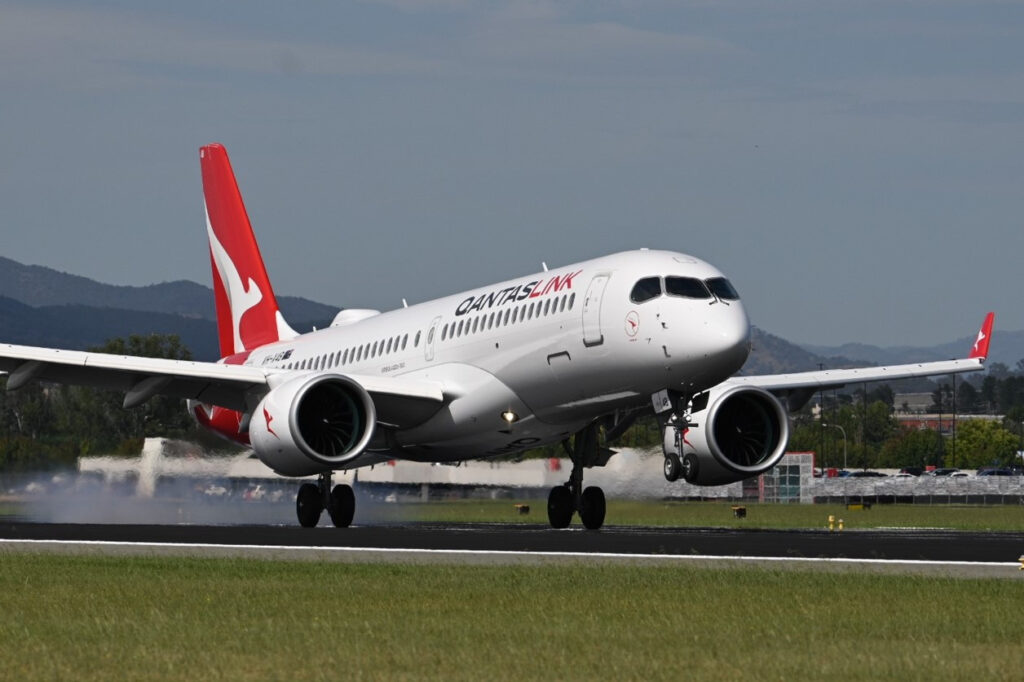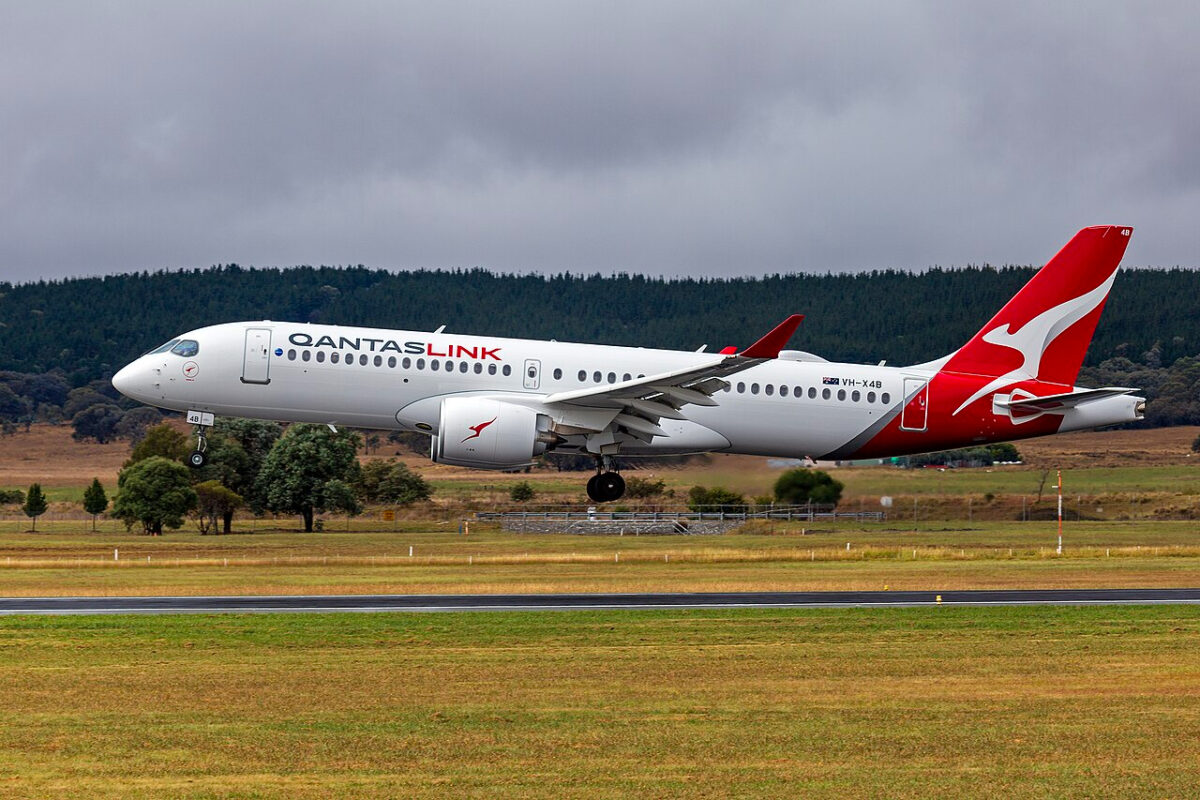October 14, 2024, saw the inaugural arrival of a QantasLink Airbus A220 in Launceston, Tasmania. The event marks the first time the newest aircraft type to join the parent company’s fleet has operated outside Australian state capital cities. The milestone comes as the airline prepares to retire its final Boeing 717 short-haul jet after well over 20 years of service.
The first A220-300 flight departed its Melbourne (MEL) base at 09:41 local time for the relatively short 50-minute flight to Launceston Airport (LST) as QF1541, where it touched down at 10:37. The plane was quickly turned around at the Tasmanian airport before heading back to Melbourne as QF1542 following which it headed north as QF1258 to Brisbane (BNE).
The inaugural flight was operated by aircraft VH-X4B which was delivered new to the airline in January 2024 and was the second example of the type to enter service with the carrier. The aircraft, named ‘Koala’, wears Qantas’ standard ‘Flying Kangaroo’ livery and can accommodate 137 passengers in a two-class layout (10 in business class and 127 in economy).

The aircraft is one of four A220-300s already in service with the carrier, with a fifth example due to arrive in the fleet in November 2024. The type is more fuel efficient than previous generation aircraft and offers passengers an enhanced overall onboard experience, according to the carrier.
The A220s are steadily replacing QantasLink’s long-serving fleet of Boeing 717s as part of the Qantas Group’s domestic fleet renewal program. The A220s are already operating on flights between Melbourne and Hobart (HBT) and will shortly also begin operating flights between Sydney (SYD) and Launceston.
“We are thrilled to bring the new Airbus A220 aircraft to Launceston for the first time today,” said QantasLink CEO Rachel Yangoyan. “We’ve had great feedback from customers on the A220 since it first started flying on our network earlier this year. It offers more space, larger windows, fast Wi-Fi, and specially designed seats that will all vastly improve the traveling experience.”
“The size of the aircraft makes it the perfect addition to our fleet that currently operates our routes to the Apple Isle and it’s great to see the A220 now flying to two Tasmanian airports. As Tasmania is the home of eco-tourism, there is no better place for this aircraft to fly as it generates fewer emissions per seat than the aircraft it’s replacing,” Yangoyan added.
Launceston Airport CEO Shane O’Hare said the Airbus A220 is a fantastic aircraft and a game changer for Australia.
“We’re delighted to welcome the first service to Launceston. Passengers will notice the larger windows and quieter engines, and our local businesses will benefit from the extra passengers the aircraft can carry,” he said. “The A220 is incredibly versatile and presents some incredible possibilities for Launceston, so we’re excited to work with Qantas on its introduction to our region and future deployment opportunities.”
With the introduction of the Airbus A220, the withdrawal of the QantasLink Boeing 717-200 fleet is well underway. Having operated 23 examples of the rear-engines twinjet over the years, there are now just three examples remaining, with two in active service and the third already parked. The type will disappear from the fleet entirely by the end of October 2024 when the last aircraft joins its sisterships in retirement, having served the airline for well over two decades.
With the retirement of the last QantasLink 717, there will be just 86 717s left in service with just two carriers – Delta Air Lines (69) and Hawaiian Airlines (17). This is out of a total production run of 206 built.

